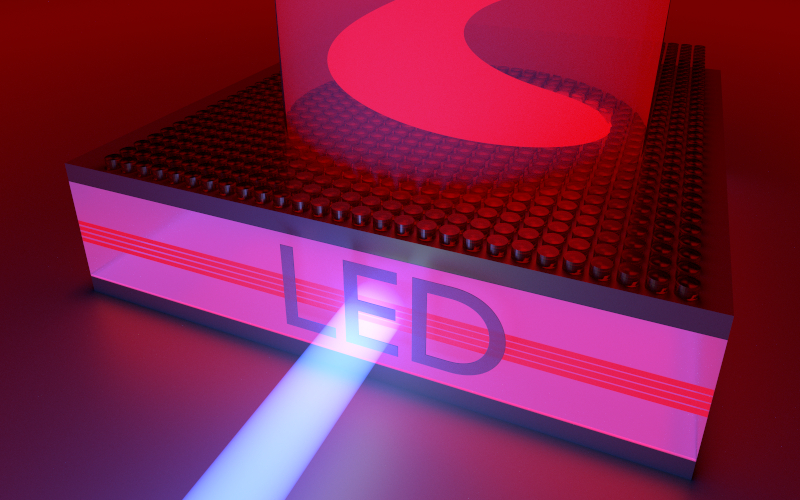
Since they were invented in the early years of the 20th century, light-emitting diodes (LEDs) have ushered in a new era in optical technology. LEDs are cheap, bright and efficient light sources. However, due to the incoherent and non-directional nature of the light they emit, LEDs are thought to be inferior to lasers. Powerful laser beams have applications ranging from communication to medicine and sophisticated optical manipulation.
Now, scientists at the A*STAR’s Institute of Materials Research and Engineering (IMRE) and Institute for High Performance Computing (IHPC), in collaboration with Nanyang Technological University, have demonstrated that the humble LED can be transformed to obtain laser-like directional light and be manipulated in similar ways to create any desired light output.
“LEDs typically emit light in all directions, but we wondered if we could concentrate LED light into a more directional, laser-like beam,” said first author Egor Khaidarov, a Scientist from IMRE. “Such a collimated light beam could then be shaped using metasurfaces, which manipulate light at the nanoscale using sub-wavelength structures, making the overall size of the device highly compact,” explained Zhengtong Liu, a Scientist from IHPC involved in the study.
To concentrate the LED light, the researchers decided to use a Fabry-Perot resonant cavity, which is a pair of parallel mirrors that can amplify a source of light. They first fabricated a micrometer-thick resonant cavity LED by using a commercial LED wafer on a gold base. Gold functions as the first mirror; on top of the LED they deposited several dielectric layers which act as the second mirror. As expected, they found that the optical cavity successfully concentrated the LED light into a narrow-angle, directional beam.
Khaidarov further fabricated two different metasurfaces on top of the resonant cavity LED—one designed to deflect light at an angle and another designed to twist light into an ‘optical vortex,' with the intensity profile resembling a donut. In both cases, the experimental results matched Liu’s simulations, showing that the resonant cavity LED light was compatible with the metasurfaces.
“This work shows how a metasurface, resonant cavity and LED can be integrated to produce compact, self-contained and power-efficient devices with special functionalities,” Liu said.
These devices could have a wide range of applications, such as in optical telecommunications, smart lighting, display screens and projectors. “They could even replace lasers in some applications, with their lower power consumption and relaxed safety regulations,” Khaidarov added.
Moving forward, the team hopes to expand this technology to industrial-level light sources and electrically driven devices, as well as experiment with broadband collimators that can concentrate and amplify a wider range of wavelengths.